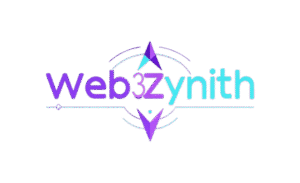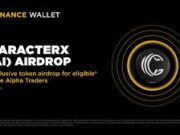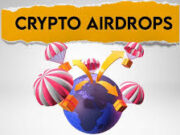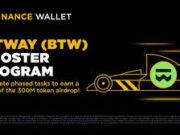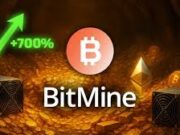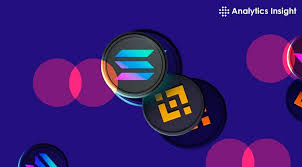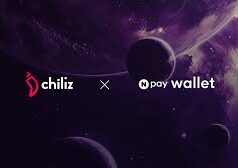July 4, 2025
In the fast-evolving world of blockchain technology, Solana and BNB Chain (formerly Binance Smart Chain) stand out as two of the most prominent Layer 1 platforms, each vying for dominance in the decentralized finance (DeFi), non-fungible token (NFT), and Web3 ecosystems. Both blockchains promise high transaction speeds, low fees, and robust ecosystems, but they take distinct approaches to scalability, decentralization, and developer experience. With Solana’s recent surge in popularity and BNB Chain’s deep integration with the Binance exchange, the debate over which blockchain is superior is heating up. This blog post dives into the key differences, strengths, and weaknesses of Solana and BNB Chain to help you decide which might be better suited for your needs.
Overview of Solana and BNB Chain
Solana: Launched in March 2020 by Solana Labs and founded by Anatoly Yakovenko, Solana is a high-performance Layer 1 blockchain designed to prioritize scalability and speed. It uses a unique combination of Proof of History (PoH) and Proof of Stake (PoS) to achieve theoretical transaction throughput of up to 65,000 transactions per second (TPS). Solana’s native token, SOL, powers the network, facilitating transaction fees and staking. With over $10 billion in total value locked (TVL) in its DeFi ecosystem and a growing number of decentralized applications (dApps), Solana is a favorite for projects requiring real-time processing, such as gaming, NFTs, and payments
BNB Chain: Introduced in September 2020 by Binance, the world’s largest cryptocurrency exchange, BNB Chain (comprising BNB Smart Chain and BNB Beacon Chain) is a high-performance blockchain that supports smart contracts and is compatible with the Ethereum Virtual Machine (EVM). It uses Proof of Staked Authority (PoSA), a modified PoS consensus mechanism, to achieve a maximum TPS of around 100. BNB, the native token, serves as the network’s fuel for transactions, staking, and governance. BNB Chain boasts a robust ecosystem, with a TVL of $4.79 billion and a large user base driven by Binance’s global reach
Key Metrics: Solana vs. BNB Chain
To understand how Solana and BNB Chain stack up, let’s compare them across critical metrics: transaction speed, fees, decentralization, ecosystem, and security.
1. Transaction Speed and Scalability
- Solana: Solana’s claim to fame is its blazing-fast transaction speeds, processing up to 65,000 TPS with the potential to reach 100,000 TPS. Its Proof of History (PoH) mechanism timestamps transactions to streamline validation, allowing for parallel processing of smart contracts via the Solana Virtual Machine (SVM). This stateless architecture reduces memory usage and enables high throughput, making Solana ideal for high-frequency trading, flash loans, and real-time applications like Solana Pay.
- BNB Chain: BNB Chain achieves a maximum TPS of around 100, significantly lower than Solana but still far ahead of Ethereum’s 15 TPS. Its PoSA consensus and 3-second block time ensure rapid transaction finality, making it suitable for DeFi and asset trading. BNB Chain’s EVM compatibility allows developers to port Ethereum dApps with minimal effort, enhancing its scalability for Ethereum-based projects.
Verdict: Solana takes the lead in raw transaction speed and scalability, thanks to its PoH and parallel processing capabilities. BNB Chain, while fast, is better suited for projects leveraging Ethereum’s infrastructure.
2. Transaction Fees
- Solana: Solana is one of the cheapest blockchains, with average transaction fees of approximately $0.00025, even during peak network congestion. This low-cost structure makes it attractive for microtransactions, NFT minting, and DeFi applications.
- BNB Chain: BNB Chain offers low fees, averaging around $0.15 per transaction, significantly cheaper than Ethereum but higher than Solana. However, fees have trended upward, with a 95% increase in fiat terms over three months as of February 2024, raising concerns about long-term affordability.
Verdict: Solana wins for cost-effectiveness, offering near-negligible fees that make it ideal for users and developers prioritizing affordability.
3. Decentralization
- Solana: Solana operates with over 1,000 validators, making it more decentralized than BNB Chain but less so than Ethereum, which has over 200,000 validators. Its PoS and PoH mechanisms require significant computational resources, which can limit validator participation and raise concerns about centralization. Solana’s validator count supports a resilient network, but its reliance on high-performance hardware has sparked debates about accessibility.
- BNB Chain: BNB Chain uses PoSA with only 21 validators, determined by the amount of BNB staked. This limited validator set enhances speed and reduces costs but sacrifices decentralization, making the network more vulnerable to control by large stakeholders or “whales.” Critics argue this centralization undermines the core principles of blockchain.
Verdict: Solana is more decentralized than BNB Chain due to its larger validator pool, but neither matches Ethereum’s level of decentralization.
4. Ecosystem and Developer Adoption
- Solana: Solana’s ecosystem has grown rapidly, with over $10 billion in TVL across DeFi protocols like Jito, Marinade, and Sanctum. Its integration with platforms like Shopify for Solana Pay and projects like Franklin Templeton’s BENJI platform highlights its versatility for payments, gaming, and NFTs. However, Solana’s use of the Rust programming language can pose a learning curve for developers, and its dApp ecosystem trails BNB Chain’s in size.
- BNB Chain: BNB Chain benefits from Binance’s massive user base and infrastructure, driving adoption through platforms like PancakeSwap, the second-largest decentralized exchange (DEX). Its EVM compatibility makes it a go-to choice for developers porting Ethereum dApps, and its $1 billion growth fund has spurred innovation in Web3 and the metaverse. BNB Chain’s daily active wallets outnumber Solana’s (1.2 million vs. 417,000 in February 2024), but Solana’s wallet growth rate (137% over three months) is nearly five times higher.
Verdict: BNB Chain leads in ecosystem size and developer accessibility due to EVM compatibility and Binance’s backing, but Solana’s growth trajectory and unique use cases make it a strong contender.
5. Security and Reliability
- Solana: Solana has faced criticism for network outages, particularly in its early years, raising reliability concerns. However, recent upgrades have improved stability, and the network has not suffered a 51% attack. Its 1,000+ validators enhance security, but the high hardware requirements for validators pose potential risks.
- BNB Chain: BNB Chain’s PoSA model, with only 21 validators, presents a higher theoretical risk for attacks, though no successful 51% attack has occurred. The network has remained operational, but high-profile exploits on dApps built on BNB Chain have raised concerns about ecosystem security.
Verdict: Solana has a slight edge in security due to its larger validator pool, but both networks have vulnerabilities that developers and users must consider.
Market Performance and Sentiment
As of July 2025, Solana’s SOL trades at approximately $198.21 with a market cap of $93.99 billion, while BNB Chain’s BNB has a higher market cap of around $100 billion, ranking it fourth among cryptocurrencies. Solana’s 24-hour trading volume is $4.5 billion, compared to BNB’s $1.4 billion, reflecting strong market interest in SOL. Posts on X indicate Solana briefly surpassed BNB in market cap in July 2024, driven by its $5.45 billion TVL compared to BNB Chain’s $4.79 billion. However, some users, like
@martypartymusic, speculate that Binance may manipulate SOL’s price to maintain BNB’s dominance, though these claims lack conclusive evidence
Use Cases and Strategic Fit
- Solana: Best for high-performance applications requiring low fees and real-time processing, such as NFT minting, gaming, and payment systems. Its integration with Solana Pay and tokenized real-world assets (e.g., Homebase’s single-family rental property) highlights its potential for mainstream adoption.
- BNB Chain: Ideal for projects leveraging Ethereum’s ecosystem, cross-chain bridging, or Binance’s user base. Its support for Web3 infrastructure and metaverse applications, along with low-cost transactions, makes it a go-to for DeFi and global markets.
Conclusion: Which Blockchain Is Better?
The choice between Solana and BNB Chain depends on your priorities:
- Choose Solana if you prioritize speed, low fees, and innovative use cases like NFT marketplaces or real-time payment systems. Its high TPS and growing ecosystem make it a strong choice for developers building scalable, user-facing applications.
- Choose BNB Chain if you value EVM compatibility, a mature ecosystem, and access to Binance’s massive user base. It’s ideal for projects that need to integrate with Ethereum tools or target a global audience.
Both blockchains are pushing the boundaries of Layer 1 technology, addressing the blockchain trilemma (scalability, security, decentralization) in different ways. Solana excels in speed and cost, while BNB Chain leverages Binance’s infrastructure for adoption and developer ease. As the crypto landscape evolves, monitoring their roadmaps and addressing their respective limitations—Solana’s outages and BNB Chain’s centralization—will be key. For now, both remain formidable players, with Solana gaining momentum and BNB Chain holding steady as a DeFi giant.
Sources:
- CoinMarketCap: Solana vs. Binance Smart Chain Overview
- Binance Academy: What Is Solana (SOL)?
- Chainspect: BNB Chain vs. Solana Comparison
- Swissborg Academy: Solana vs. BNB Chain
- X Post by @wiseadvicesumit, July 27, 2024
- X Post by @MasterCryptoHq, March 25, 202
